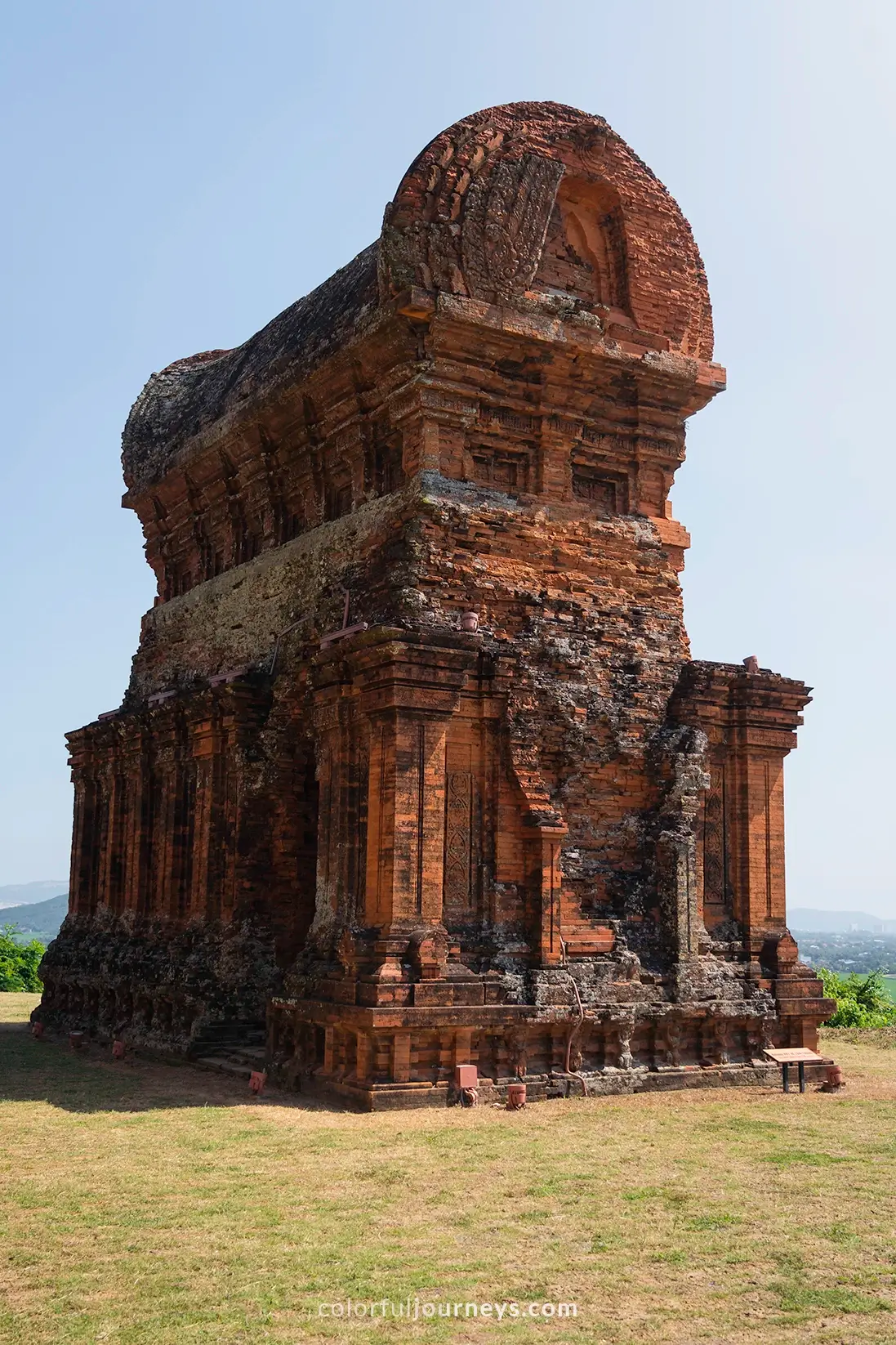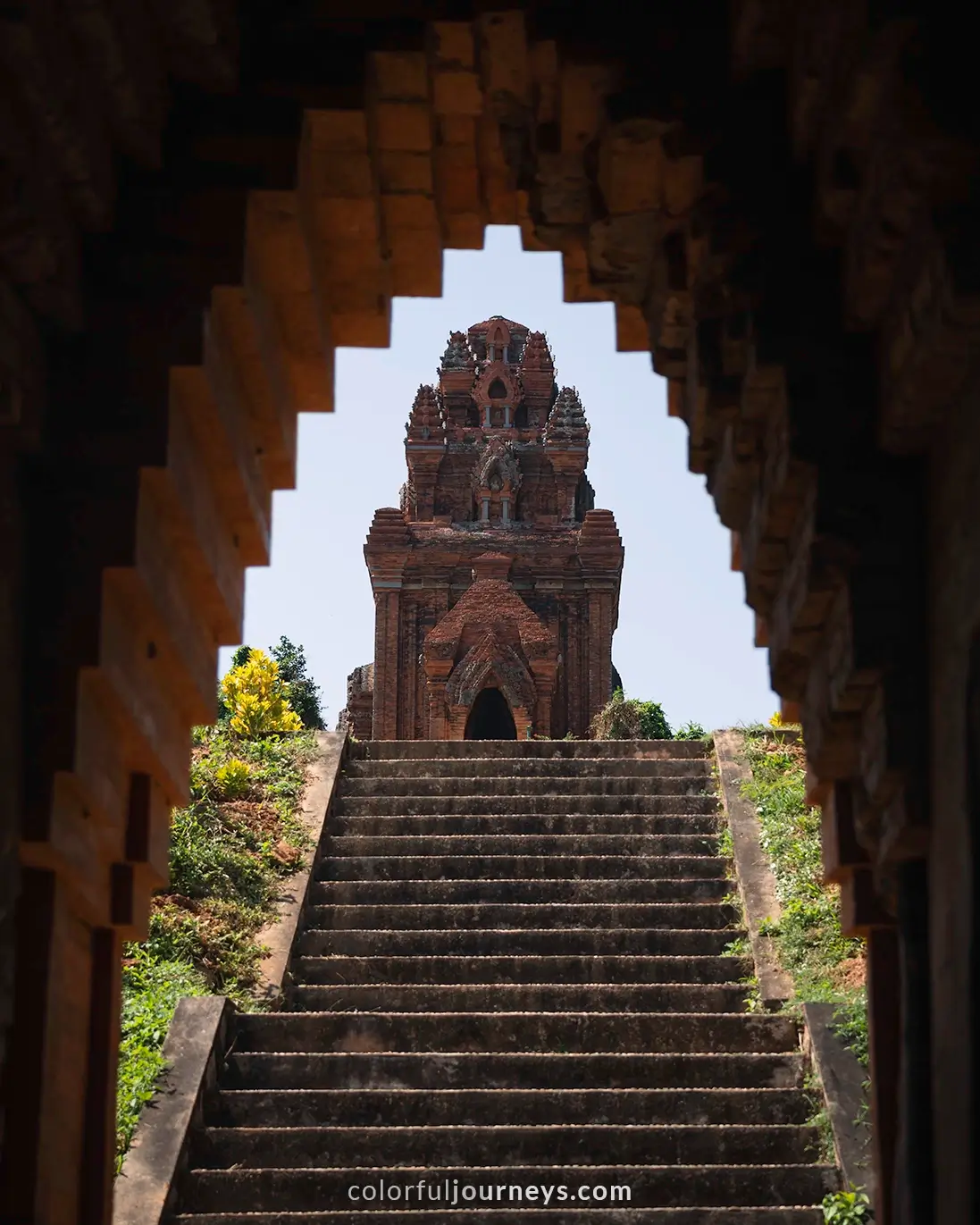Vietnam, well known for its unique culture and delectable cuisine, also boasts stunning temples scattered throughout the country.
Among these temples are the Banh It Towers in Binh Dinh Province, which belonged to the ancient kingdom of Champa.
The Banh It Towers, also known as Thap Banh It, form one of the largest existing clusters of Cham towers in Vietnam. Additionally, the towers are easily accessible while remaining off the usual tourist trail.
So, if you're interested in visiting the Banh It Cham Temple, here's a quick guide to the temple, including essential information, and what to expect when visiting.


.jpg)
About Banh It Cham Towers
The Banh It Cham Temple Complex, built in the late 12th and early 13th centuries, is made up of four towers: the Main Temple, the Gate Tower, the Fire Tower, and the Stele Tower. These towers are from the same era as the famous My Son Tower, near Hoi An.
The Banh It Cham Towers are a reminder of the Champa era's unique architectural style and are relatively well preserved.
The towers are standing in a stunning natural setting, perched atop a small hill and surrounded by vegetation, making them a must-visit!
.webp)
Banh It Cham Temple Location
The Banh It Cham temple is located about 15 kilometers from Quy Nhon Center, or a 20-minute drive.
If you arrive by plane at Phu Cat Airport, you will see red brick towers as you drive to the city of Quy Nhon. They rest on a hill surrounded by rice fields, which makes them even more appealing. Find the exact location here.
Visiting Vietnam soon? Here are 17 things you need to know before visiting Vietnam, which includes the best time to visit, visa requirements, how to stay safe, and more!
.webp)
What to Expect
Getting to the Banh It Towers requires climbing up 100 concrete steps. The stairs are surrounded by trees and begin next to the parking lot. You’ll pass by a few smaller tombs at the beginning.
Soon, you will reach the Gate Tower, also known as the Entrance Tower (Gopura). It is located east of the temple tower complex and shares the same shape as the Main Tower. The Gate Tower has a brick structure that is roughly 13 meters tall. Once you get inside the tower, the temperature is cool, and the view of the main tower with the steps upward is impressive.
After the Gate Tower, ascend the steps till you reach the Main Tower, or Sanctuary Tower (Kalan). It is the tallest tower standing at 29.6 meters tall.
Walking around the brick temple, you'll notice that the walls are deteriorating. Yet you can still see intricate patterns on the walls and on the roofs, such as the Nandi cows and Kala masks. The temple has a statue of Shiva (the God of Destruction), and you must cover your shoulders and knees if you want to visit inside. Note that taking pictures inside is not permitted.
.webp)
Next to the main tower stands the Stele Tower (Posah). The tower has a similar size as the gate tower and has four open entrances in all directions.
The last building is the Fire Tower (Kosaghra). This tower is not situated on the square like the others. It’s around ten meters tall and is used to prepare offerings before bringing them to the Main Tower for ceremonies.
.webp)
When going down, use the same steps as when going up. There is a ramp that is used to bring visitors up by motorbike, but it’s quite steep and it might be difficult to walk down this way.
Interested in visiting more temples in Vietnam? Head to Da Nang and explore the Marble Mountains. Find everything you need to know and why we think it’s worth a visit in our complete guide.
.webp)
Best Time to Visit
The Banh It Cham Temple can be visited all year round. However, the best months to visit are from January to March, when you can expect the least rain.

Read: Best Time to Visit Vietnam
.webp)
Opening Hours
Banh It Towers opens everyday from 7am to 6pm, but hours may vary during public holidays. We recommend arriving early in the morning or late in the afternoon to avoid crowds and heat.
.webp)
How Long to Spend at the Complex
Depending on how much time you want to spend visiting the Cham towers, you should allow at least 40 minutes to an hour to fully explore the complex and appreciate the views from the top.
.webp)
Entrance Fee
The entrance fee for visiting the Banh It Cham Temple costs about 18,000 VND (less than 1 USD) per person.
You will pay your entrance fee to a guard sitting by the entrance under an umbrella. Apart from your entrance ticket, you’ll have to pay for parking which is around 3,000 VND for a motorbike.
.webp)
Final Thoughts
Visiting the Banh It Cham Towers is one of the best things you can do when in Quy Nhon. Not only do the towers offer a unique insight into the Cham culture and history, but you’ll also get to see the stunning views at the top.
In addition, the towers are conveniently located near Quy Nhon center, the entrance fee is reasonable, and the climb is easy. So, don’t miss it when visiting Quy Nhon!
That’s the guide to visiting the Banh It Cham Temple in Quy Nhon!
If you want to see more temples in Vietnam, check out our guide to the must-see temples in An Giang Province. It includes 7 beautiful Buddhist temples, including hilltop pagodas and monasteries.
Let us know if you have any questions in the comments below.
Some links in this Banh It Cham Towers Guide may be affiliate links.
This means that if you make a purchase after clicking on one of our links, we will receive a small commission at no extra cost to you. Please know that by doing so, you are supporting Colorful Journeys in continuing to provide free high quality content to help you in your travels!
.webp)







.webp)
.webp)
.webp)
.webp)
.webp)